Over the last couple of months, I have been trying to get a better idea of how the human visual environment, and our perception of it, might have changed. The last eight articles have considered different aspects, and in this final article I try to bring all those thoughts together into a unified timeline. After that, there is a list of links to the original articles for you to follow up individual issues.
In antiquity, the human visual environment was dark for much of the time, particularly for those living in northern Europe, and during the winter months. In those lower levels of illumination, human colour vision weakens, and what we see becomes more monochrome. This may help explain why traditional visual arts have long placed emphasis on tones rather than colours.

For working classes in particular, exposure to colour was in any case largely limited to that seen in nature. When working outdoors during the warmer and lighter months of the year, they would at least be in the greens and earth colours of the countryside, with the prospect of added colour in the blossom of flowers.
In contrast, the upper classes lived in environments in which they could enjoy greater exposure to a wider range of colours, and many had their houses richly decorated to achieve that.
Middle classes were somewhere in between: although they had limited scope for decorative use of colour in buildings, many collected coloured clothing, and took to dressing up whenever they had the opportunity. But by and large, highly coloured clothing was reserved for the high points in life: major social occasions, churchgoing, ceremonial, and when acting in an official office.

In the absence of optical aids, few had any visual perceptual experience beyond that of their own mental images. Our brains assemble fragments of detail from the centre of our visual fields into a whole mental image, stitched together like a modern camera might assemble a view into a panorama. This assembly proceeds according to rules which preserve, among other things, the forms of the objects which we see. When we look directly at a tower, for example, and observe (as we expect) that its sides are parallel and vertical, that form is preserved in our perceived panorama.
Some phenomena which we now take for granted only occur in optical devices like cameras. Blurring was a phenomenon confined to abnormal sight – the result of refractive errors in the eye (increasingly corrected by spectacles), or abnormal states such as drunkenness and disease. People had no way of varying their field of view, or of ‘zooming in’ to see more distant objects. Human sight produced a single optical projection in the mind.
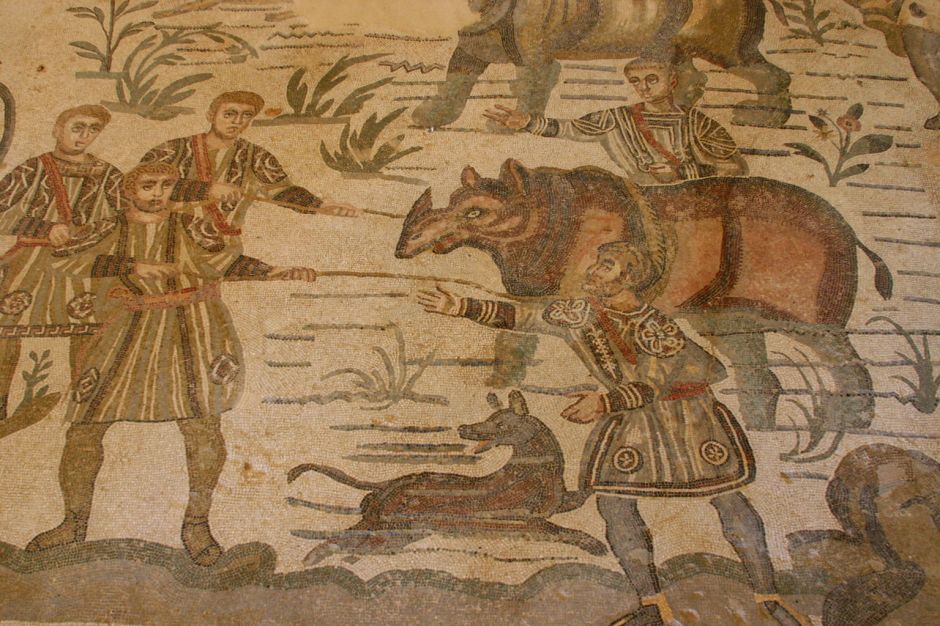
High-level interpretation of images was also more accepting, and less bound by desire for objectivity. People were quite content to ‘see’ angels with wings, gods, and real animals such as a rhinoceros alongside mythical beasts such as a unicorn.
A steady increase in urbanisation across Europe exposed people to more rectilinear objects. As visual arts strove to be more representational in the early Renaissance, the need for more accurate perspective projection became apparent. By 1430, this was achieved in Florence, Italy, most obviously in the painting of Masaccio.
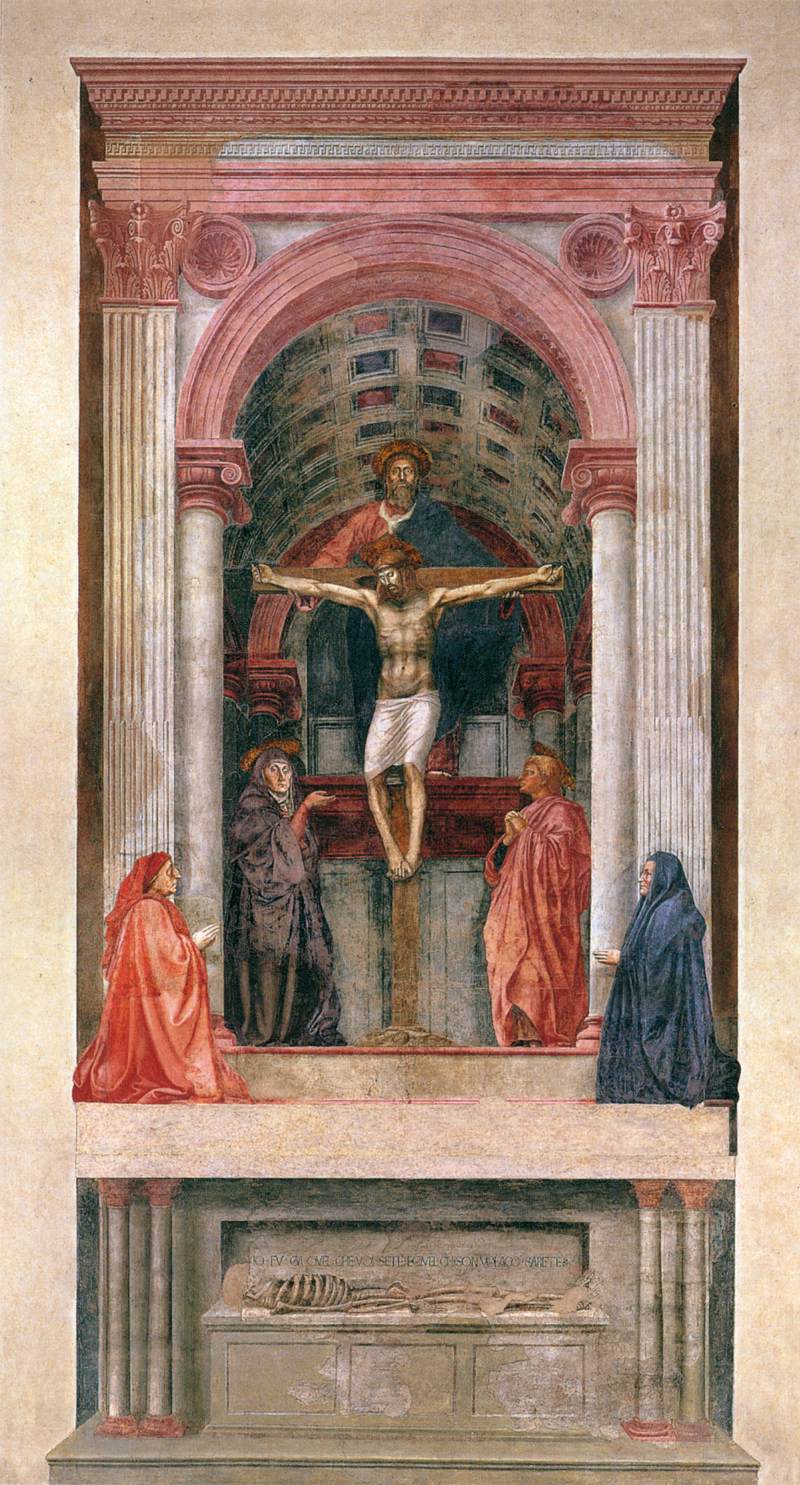
With the geometrical help of the Florentine architect Filippo Brunelleschi, Masaccio painted the first large-scale trompe l’oeil using a modern projection. This enabled many other painters to play with the duality of paintings, which we know are really two-dimensional, but which we can interpret as 3D images.

Until 1450-1500, visual art was very rare, even among the rich. Then Johannes Gutenberg’s printing press changed this dramatically. During the 1490s, Albrecht Dürer started making high-quality prints, and his godfather, Anton Koberger, published the Nuremberg Chronicle with nearly two thousand woodcut illustrations.

By the time that Hendrik Goltzius engraved this illustration of Lycaon Transformed into a Wolf in 1589, individual prints, collections of them, and illustrated books were available throughout Europe. They were still expensive, and with low literacy levels even illustrated books were hardly commonplace.

Artists increasingly exploited perspective projection to spectacular effect – here, Goltzius uses extreme foreshortening, a phenomenon built on our mind’s insistence of keeping its whole composite image in sharp focus.
In 1683, the first collection of art and other objects in the Ashmolean Museum, Oxford, was opened to the public.
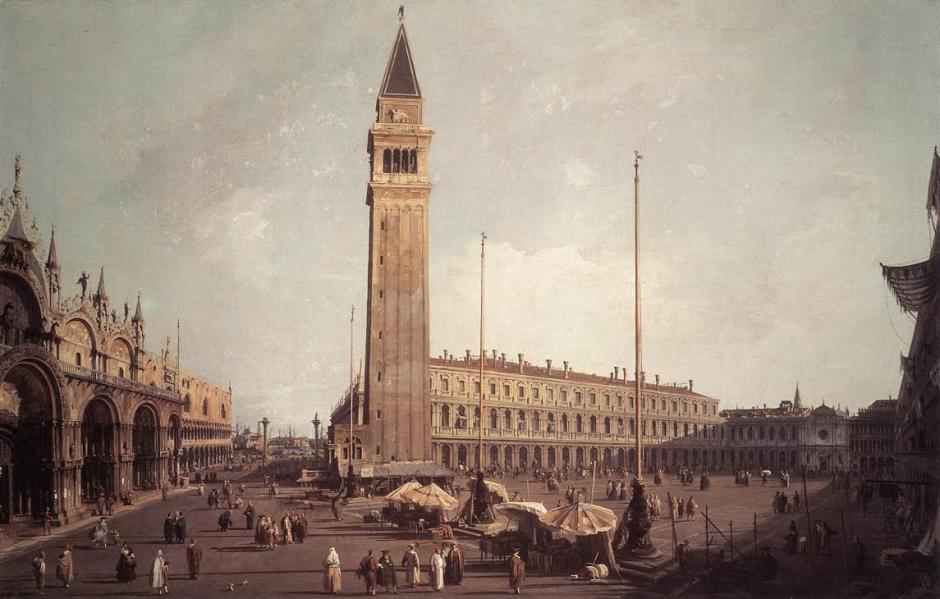
Artists like Canaletto experimented with the projections of views, perhaps here the result of a camera obscura. Seen from the top corner by the basilica, he has compressed a view wider than a right angle into his canvas, which has resulted in distortion of the angle of view of Piazza San Marco in Venice. But every vertical remains meticulously vertical – something he could not have seen in a camera obscura.
They also developed techniques for giving the impression that people, animals, and other objects were in motion. These conform to the mental image of motion before the arrival of cameras: mid-air and unstable positions, sweeping hair and clothing, and the like.

Bring all those clues together, and a skilled and observant artist can show two people running past a crowd of waving onlookers.
In 1793, the Louvre, Paris, opened to the public, exhibiting a large collection of paintings and other art. However, throughout the 1700s and 1800s, paintings were hoarded by the upper classes, and were little seen outside their collections and the growing number of public galleries.
From 1800, larger window panes could be manufactured more readily, allowing buildings, including artists’ studios and galleries of art, to let in more daylight. However, the expansion of cities resulted in changing urban environments. Those who lived and worked in poorer areas saw less natural light, and less colour; the better laid-out areas populated by richer citizens allowed more natural light, and were richest in colour.
In 1814, London’s Dulwich Picture Gallery opened to the public. A succession of major galleries and museums opened through the remaining years of the 1800s, and into the twentieth century, greatly increasing access to paintings and other art.
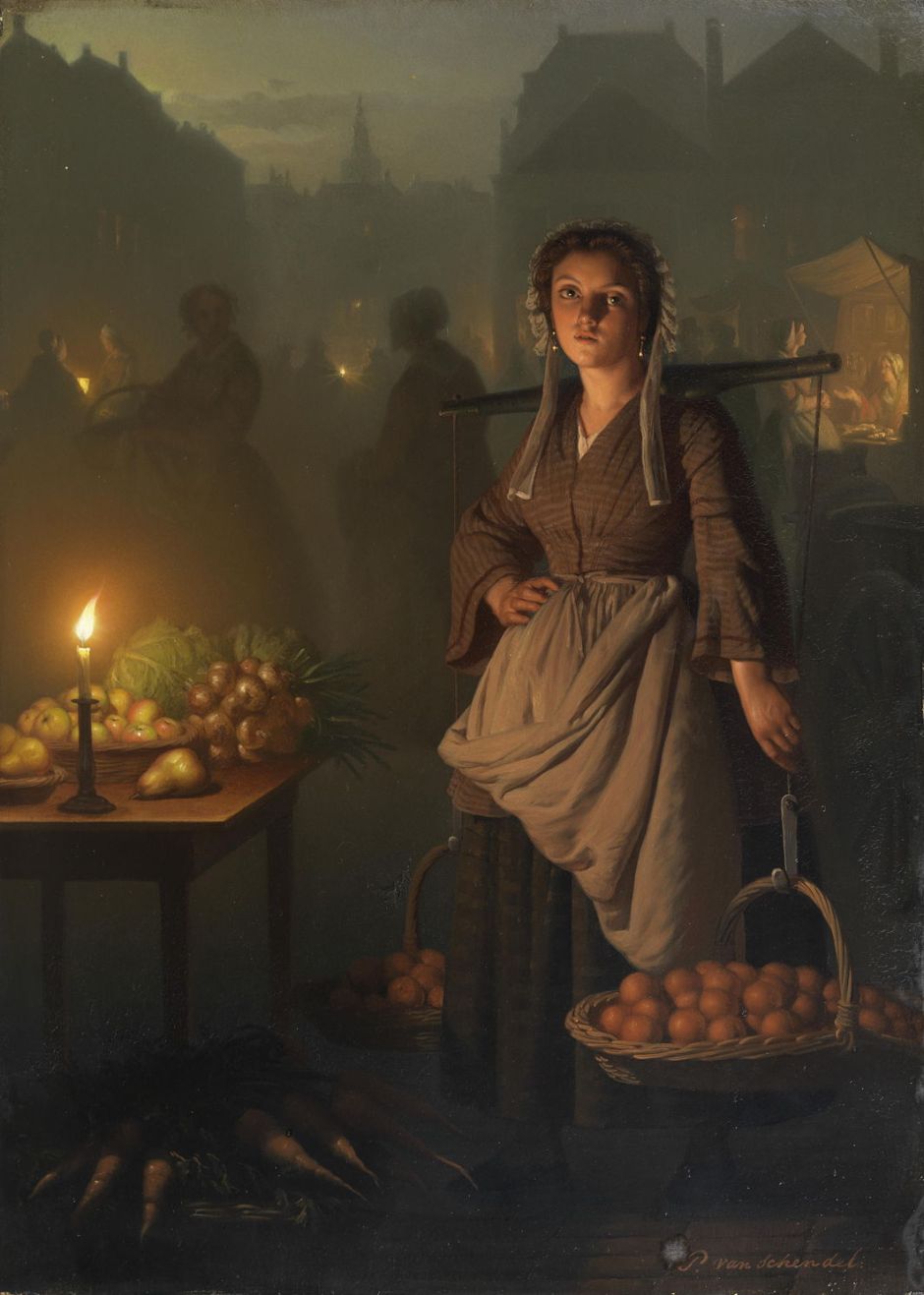
In 1829, the city of Paris installed its first gas street lamps, although those early lamps emitted equivalent light of only ten candles.
From the mid-1820s, photography started to develop, with its official ‘birth’ in 1839. For the first time, people saw blurred areas in images, resulting from limited depth of field of lenses, and long exposures necessary to obtain each photographic image.
From about 1850, kerosene lanterns became available, providing very much brighter light than earlier oil lamps or candles.
In 1851, London’s Crystal Palace, built from thousands of sheets of glass, demonstrated how much natural light could be captured. Studios became better-lit year-round, which enabled high chroma painting.
From the 1870s, colour printing got cheaper. Although monochrome prints had become inexpensive and widely viewed, the appearance of affordable and high-quality colour prints enabled many to see images as good as original paintings.
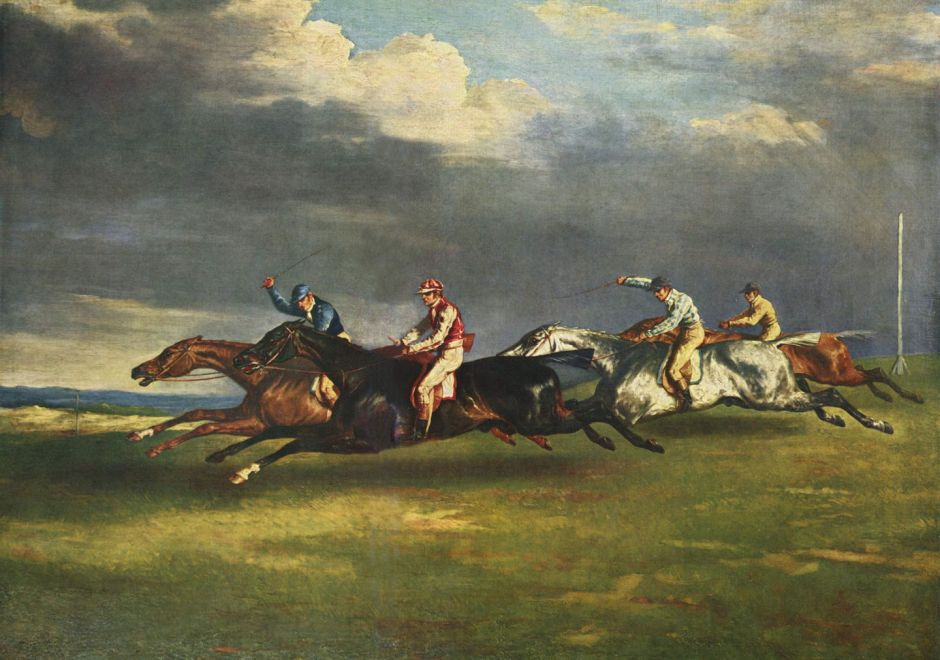
Increasing objectivity and emphasis on faithfulness to reality was reflected in painting, and enhanced by the challenge posed by photography, which claimed to show the world as it really is. One immediate consequence was in the depiction of animals and humans in motion.

In 1878, Eadweard Muybridge demonstrated by photomontage that galloping horses do not have all four hooves clear of the ground when their legs are extended – a standard depiction used by many artists. This was, and still is, a moment of triumph for new photographic technology, demonstrating a truth which had eluded centuries of great artists.
However, as camera lenses developed in different focal lengths, the distortion introduced into wide-angle views, loss of depth with telephoto lenses, and blur appeared to reduce their credibility.

In the late 1800s, ‘naturalist’ or social realist artists like Christian Krohg responded with clinical, almost ethnographic, documentary paintings, which also came with a social message that photography and Impressionist painting lacked.
By 1900, Paris had over fifty thousand street lamps, most either incandescent gas mantles or open arc lamps, giving bright light throughout the night, and at all times of the year.

By 1900, crude monochrome movies were taking the world by storm. In spite of their low-quality monochrome images, for the first time people saw artificial moving images. Painters started to use visual metaphors derived from those movies, including blurring, and eventually they became stylised into motion lines, popular in illustrative work from the late twentieth century.
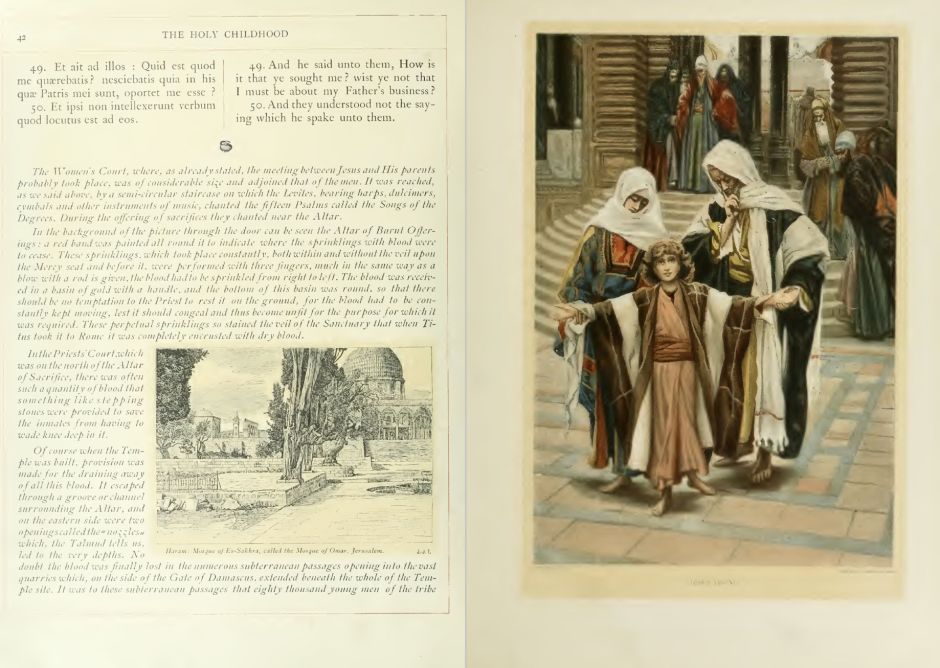
In the early twentieth century, photographic images became widespread in most European and North American societies, and increasing numbers of people were taking their own photographs. Colour printing improved in quality and became considerably cheaper, allowing illustrated books and magazines to become more affordable, more vivid, and more popular.
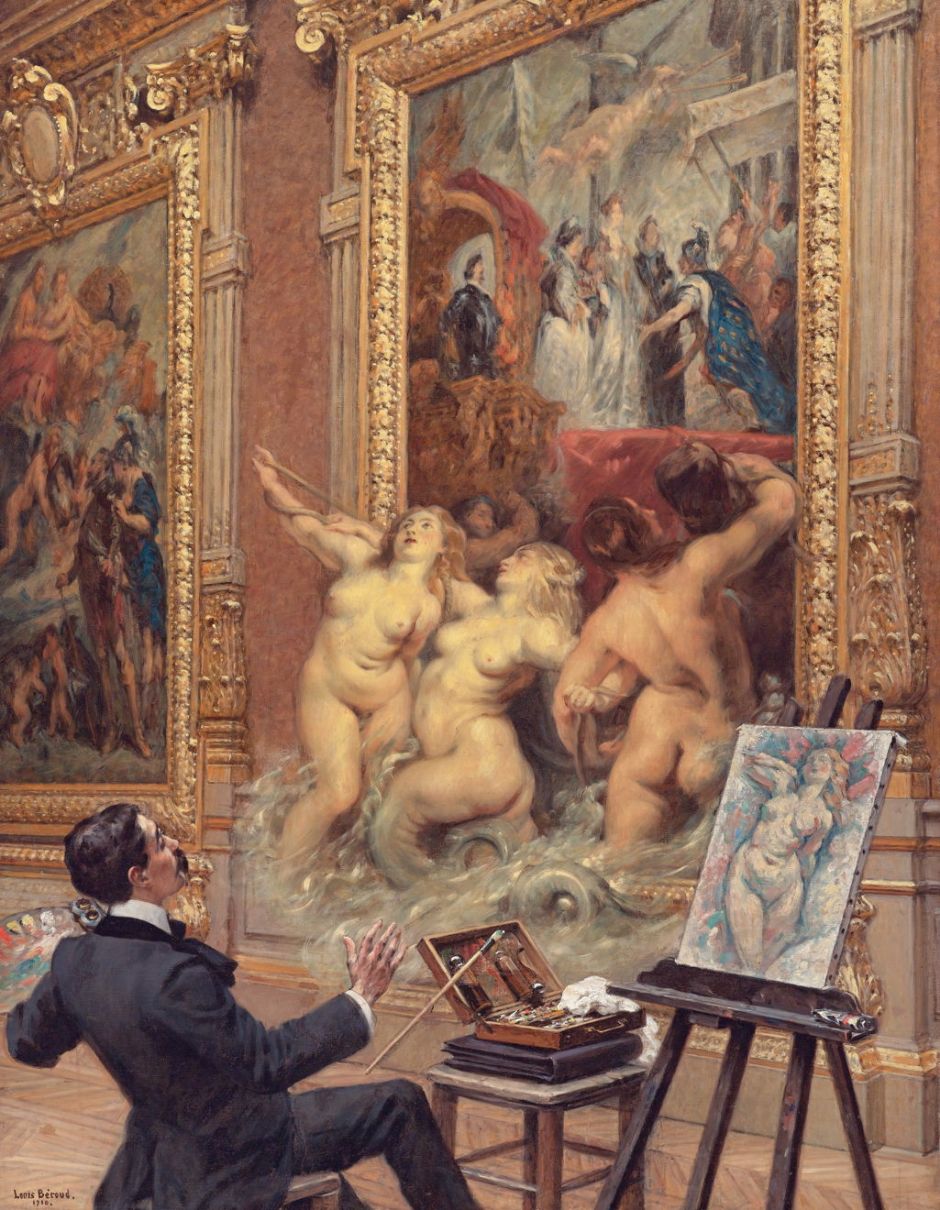
Although people tended to trust what they saw in photographs, they were becoming increasingly sceptical of images showing events and objects which were beyond their visual experience. Paintings such as Louis Béroud’s The Joys of the Flood (in the Medici Gallery) (1910) were therefore readily recognised as fiction, and not of the real world. This was strengthened by the work of war artists and photographers during the 1914-18 war.
During the 1950s, cheaper and brightly-coloured articles arrived in many households. These included clothing, then with the manufacture of plastics incorporating bright synthetic pigments, many household wares followed, from brilliant red buckets to blue brooms. Even the poor gained access to colour images in magazines and books, and in colour movies, which filled progressively larger screens.
Many urban environments were now lit throughout the night, and the centres of major cities had zones which had extensive colour lighting and brilliant animated displays: places such as Piccadilly Circus in London, and Times Square in New York.
Televisions started to become popular. Like the first movies before them, they initially displayed low-resolution monochrome images. The first real flight simulators used real-time colour displays, and became increasingly sophisticated over time.
In the 1960s and 1970s, colour television arrived in many homes. Screen sizes were small at first, and their colour quality low, but by the end of the century large high-quality displays were quite common.
In photography, blurring became popular as an artistic technique, and most recently has become known as bokeh, a feature of the cameras built into many mobile phones.
There can now be few children around the world who do not encounter pictures from soon after birth, and by the time that they are adults have not lived under a bombardment of still and moving pictures for many of their waking hours.
However, at the end of the twentieth century, with digital images and their software manipulation, it has become practically impossible to know whether what we see in a ‘photo’ is real, or has been skilfully constructed on a computer.
If we are to believe the companies that sell us consumer electronics, we are now on the edge of a ‘revolution’ in virtual reality (VR). We will soon all don headsets with wide-field binocular displays showing us imaginary worlds, or wear augmented reality (AR) spectacles displaying images superimposed on those of the real world beyond.
Yet we will still be using the same eyes, and perhaps the same brains, as the ancients used to see their world. I fancy that the way in which we perceive paintings has also changed greatly since then.
Articles in this series:
1, The long dark night (light and lighting)
2, Colour and class (colour)
3, Static views
4, Motion and photographic artefact
5, Every picture tells two stories
6, Illusions of the real
7, Is perspective learned or natural?
8, Don’t believe your eyes – visual fidelity and belief

